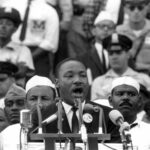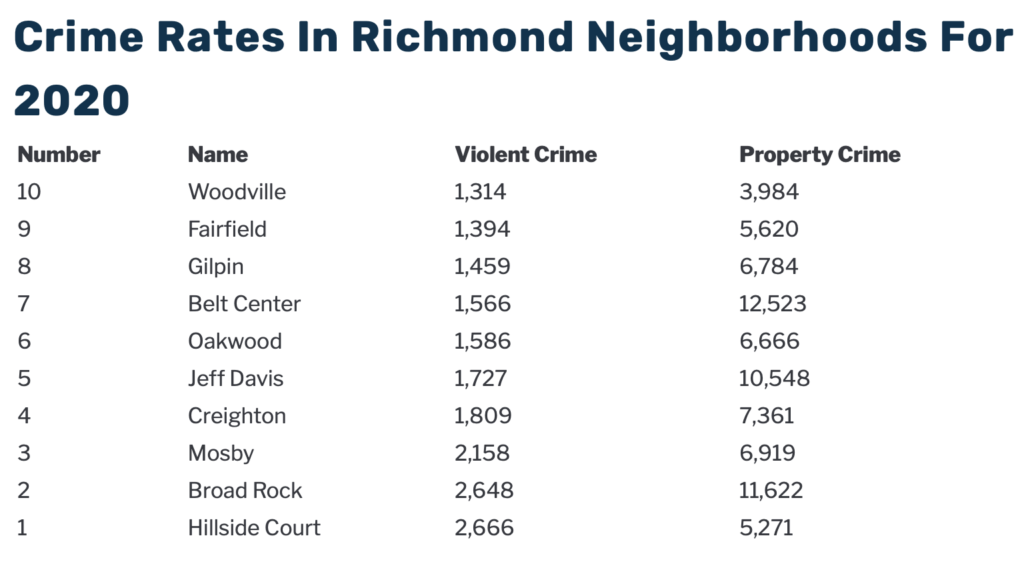
by James C. Sherlock
It’s Black History Month. Even in Richmond.
As a contribution, I am going to review the facts on the ground in Richmond — in its most crime-ridden neighborhoods and its worst public schools.
Which are overwhelmingly Black. And co-located.
In a city with a Black mayor and a Black school board. And a Black Commonwealth’s Attorney, Colette Wallace McEachin, who, since 2019,
has helped to make Richmond a safe, just and equitable city for all, including victims, witnesses and offenders.
Her office offers many alternatives to incarceration for most non-violent offenders.
She really wrote that. And she has “worked toward dismantling “the school to prison pipeline.” Excellent news.
But, in the real world, Richmond schools and many neighborhoods are beyond tragic.
That doesn’t mean order cannot be restored. Or that poor Black children from dangerous neighborhoods can’t learn.
NYC charter schools have proven for years that Black kids from the very same type of disadvantaged, dangerous neighborhoods that some of the Richmond kids call home can succeed at the highest level.
It just means the Richmond kids from tough neighborhoods don’t learn.
We are going to look at what are measured as the 10 most crime-ridden neighborhoods in Richmond, where the kids from these neighborhoods go to school, and the performance of those schools.
And see what we see.
It is a nightmare.
To get our list of the most dangerous neighborhoods, I have used a 2022 list from a website called upgradedhome.com. It is a useful read.
Those neighborhoods must not be in Ms. McEachin’s part of Richmond.
About Hillside Court, with only 700 residents, the website writes:
Sometimes called “Killside Court” by the local teens, Hillside Court is considered to be the most violent part of Richmond by a landslide. A violent crime rate that’s 600 percent over the national average, gang activity in plain sight, and rampant drug use have made this a place that both police and people try to avoid.
You get the point.
So how did schools, who don’t get to see these kids until they are 5 or 6 and have them 35 hours a week 9 months a year (not counting chronic absenteeism), get to be the namesake of progressives’ “school-to-prison pipeline”?
That slogan and Ms. McEachin caused Richmond to remove the cops from the public schools in the most dangerous neighborhoods in the city. In 2020.
Good job.
Police. Richmond residents and their city council representatives may wish to see about increasing police presence in those neighborhoods.
It would help if they had enough cops. And if Ms. McEachin had their backs.
A year ago the Richmond police force had 137 vacancies, or 18% of the force. They left in droves after the summer of 2020.
The City Council was not expecting an uptick in hiring. The mayor’s budget for police was flat in FY 22 from FY 21, which was lower than FY 20.
Schools. Overall, Richmond Public Schools are horrible.
But we are here to see where the kids in these high crime areas go to school.
Those schools are worse.
10. Woodville: Woodville Elementary, Henry L. Marsh Elementary, Martin Luther King Jr. Middle, Armstrong High.
9. Fairfield: Woodville elementary, Fairfield Court elementary, Martin Luther King Jr. Middle, Armstrong High
8. Gilpin. Armstrong High, Albert Hill Middle, Binford Middle; Henderson Middle; Overby-Sheppard elementary; George Washington Carver Elementary
7. Belt Center. Elizabeth D. Redd Elementary, George Wythe High, Westover Hills Elementary, Lucille M. Brown Middle, Swansboro Elementary
6. Oakwood. Chimborazo Elementary; Armstrong High, Martin Luther King Jr. Middle
5. Jeff Davis. J.L. Francis Elementary, Oak Grove Elementary, Thomas C. Boushall Middle, George Wythe High
4. Creighton. Henry L. Marsh Elementary, Woodville Elementary, Martin Luther King Jr. Middle, Fairfield Court Elementary
3. Mosby. Henry L. Marsh Elementary, Woodville Elementary, Fairfield Court Elementary, Martin Luther King Jr. Middle, Armstrong High
2. Broad Rock. George Wythe High, Armstrong High, Lucille M. Brown Middle, Swansboro Elementary
1. Hillside Court. Oak Grove Elementary, Thomas C. Boushall Middle, George Wythe High
So, 19 schools serve ten neighborhoods where it may not be safe to walk down the street in the daytime. Or park a car.
So school is supposed to be safe?
Chickens and eggs. So, what do we have here? Who are the chickens and who are the eggs?
The kids are certainly eggs.
In the chicken category we have parents, neighbors, the school board, the schools and lack of public safety which is the responsibility of the city council.
Questions include:
- Why, exactly, did the nine members of the school board run for the job? That is a serious question.
- What does the Superintendent’s weekly calendar look like? When do the worst schools come up? Same questions to the school board.
- As for the principals, how in God’s name can one preside over one of the schools listed here day-after-day for years and not lose one’s mind? Especially now that restorative justice won’t let them kick a bad kid out of school without a U.N resolution.
- Any other thoughts about teacher shortages?
- Why does not the city council flood those neighborhoods with cops? Sorry, forgot, too many quit.
- Where are the community organizers? No neighborhood watch possible when bullets are flying? Not possible to ID the shooters to the cops?
- Can the school board invite the most successful urban charter school managers to help — at least to consult on new policies and methods? (Sorry, lost my way for a minute.)
- Is everyone planning to vote for Ms. McEachin again?
The press are apologists for the causes of the nightmare.
Another chicken is the press.
When was the last time the Richmond Free Press called out this Black catastrophe? Stories on Marsh Elementary’s new playground won’t get it done. In 2020, the editor weighed in:
We were pleased with Richmond Schools Superintendent Jason Kamras’ announcement last week stating that he will ask the School Board to remove police officers from city schools.
That was certainly the major problem with Richmond schools — too many police officers.
The Black press looks away and deflects blame, as does the Richmond Times-Dispatch. They follow the same playbook as Democrats in the General Assembly use in education.
They repeat endlessly that bad schools are a funding problem. Only. Progressive dogma: If a government program fails, raise its budget.
Violence is blamed on guns and the right.
Unless someone from a protected class pulls the trigger. Which is the case 100% of the time in those most dangerous neighborhoods. Then it is the fault of the gun.
And their mantra is that charter schools take money from the public schools. Like those listed above.
Bottom line. Richmond Public Schools is a self-perpetuating system that has no observable purpose other than to sustain itself at ever-higher costs.
Those violent neighborhoods are artifacts of too many out-of-control adults producing too many out-of-control children supported by bad public policy, too many apologists, crazy-bad schools, fear, and not enough cops.
And a Commonwealth’s Attorney who writes what she has written on her home page.
But there are good adults in there, and good kids who deserve a chance to learn. But they are scared, and should be.
Who is looking out for the good kids in bad neighborhoods who just want a fair chance in the world?
When is it their turn for “equity”?


Leave a Reply
You must be logged in to post a comment.